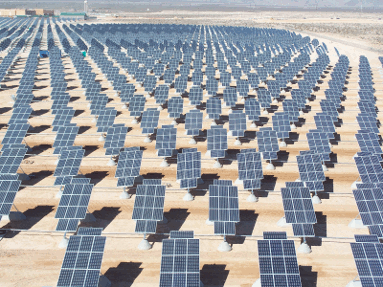Changes in Solar Power Technology

Large Solar Panel array at Nellis Air Force Base in Nevada Picture by Airman 1st Class Nadine Y. Barclay
Many people first became excited about convering sunlight to usable energy to power devices in the 1970s when the first boom in solar power happened. There is something special about the direct conversion of sunlight to electricity - a solid state device that sits there quietly and does its job with no movement or moving parts. Solar cells have been deployed all around the world which are often still working even as much as 25 to 30 years after they were first installed without maintenance or the need for refurbishment in a way that a mechanical system would require. Furthermore, electrity is very precious and is the kind of energy that can be used to do almost anything else including powering an electric car or other transportaton is thus another option that the electricity from solar cells can be employed to power, whereas powering a car with thermal energy could be done but would be a much more difficult problem. Whilst very few people may understand the physics of solar cells, everyone can appreciate the electricity that they output as nearly all of the world uses electricity in some way in their lives.
The changes in the technology over the years have been really impressive, not that the materials have changed so much in the last 20 years or so, but the cost has reduced dramatically so that solar power is now a widespread commercially available product. The public's increased awareness of the value and cost of energy continues to make alternative methods of power production more popular, particularly whenever there is a significant rise in the price of heating oil and gasolene, which naturally makes people take greater notice of energy . There is a hightened awareness amongst the population about people's energy use and how it has effects on other aspects of their lives.
One of the biggest changes though has been the way that solar energy has moved from being a tiny industry to a legitimate force to be reckoned with, which is now attracting lots of venture capitalists who are interested in investing in photovoltaic technology and other solar technologies. This is finally a recognised business and a product that is available in home improvement centers. It is being used internationally and every developed country is working hard to utilize solar power and make it part of their energy strategy.
Something that holds great promise is the fact that as increasingly more photovoltaic systems are deployed there is more interest in other materials for base electricity generation. For example devices based on gallium arsenide which has historically been used to provide power for spacecraft during the last couple of decades. Those products in addition to silicon solar cells can now be found in concentrator systems which in areas of the world, for example South Western United States, Spain or Greece, are now being deployed in large grid-connected utility-type systems.
Although this is outside of the housing deployment market, this is where the real cost changes are going to happen because a very large solar power plant could replace a large fossil fuel powered plant. This is the type of project that creates a huge impact all at once. It is much more difficult to get that many kilowatts, megawatts or even terrawatts of electricity by gradually adapting individual houses one by one. The combination of the residential sector embracing solar technology of both the photovoltaic and solar thermal kind, and also the large scale electrical grid-connected sectors growing in countries around the world, is finally resulting in solar power becoming a big business idea and also starting to provide a large share of global energy requirements.

Credits: Cecile Warner, US National Renewable Energy Laboratory, World House Radio.
- Renewable Energy:
- Login to post comments
